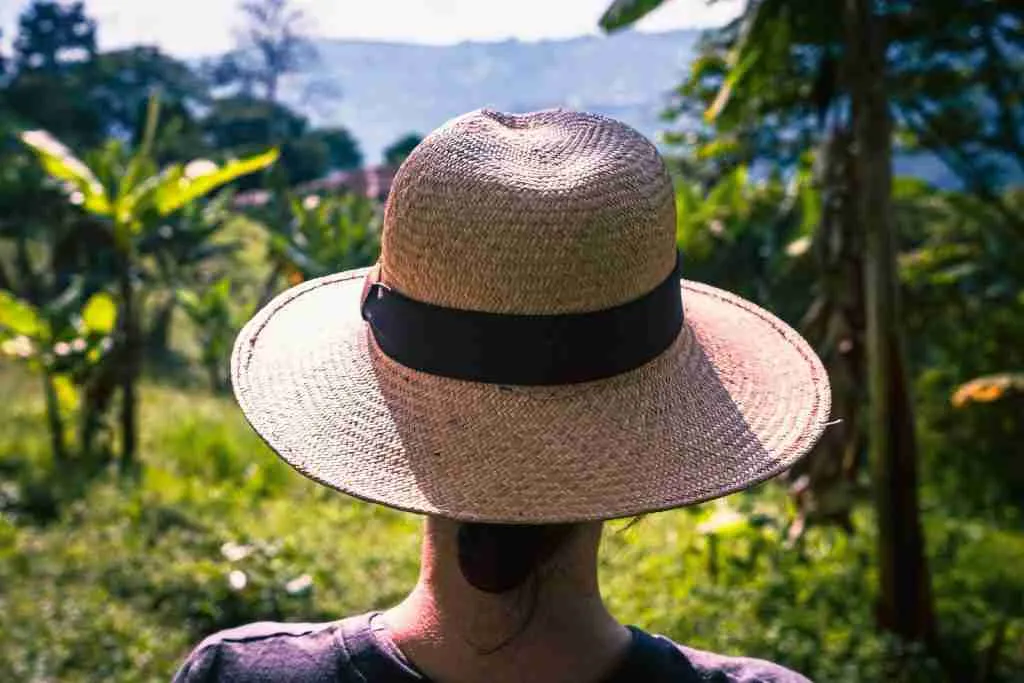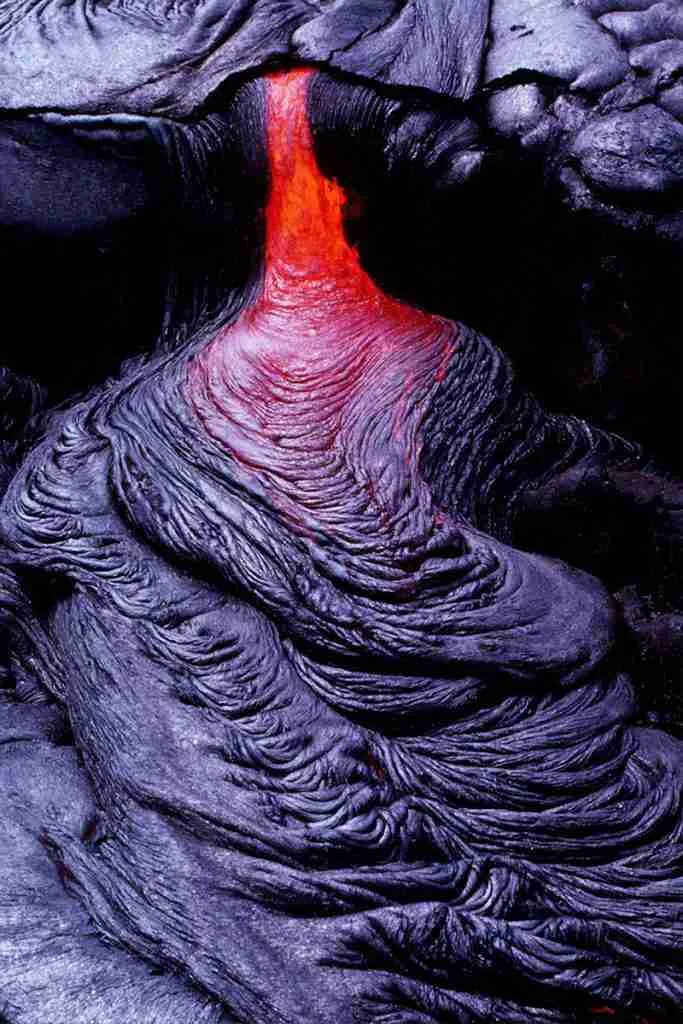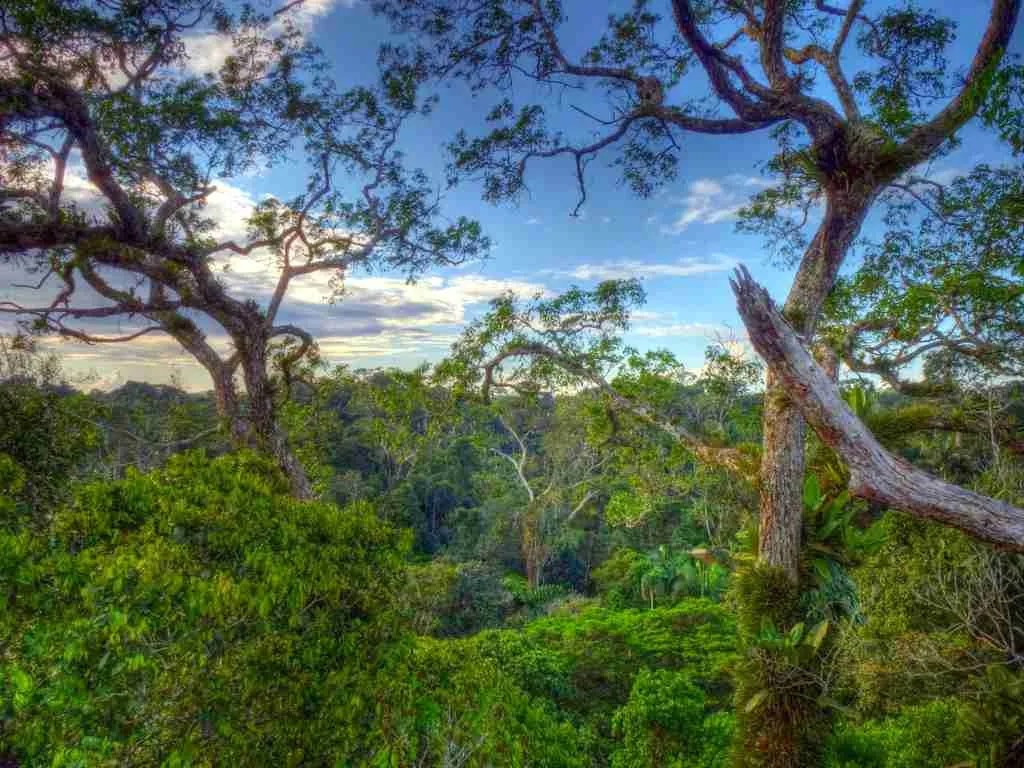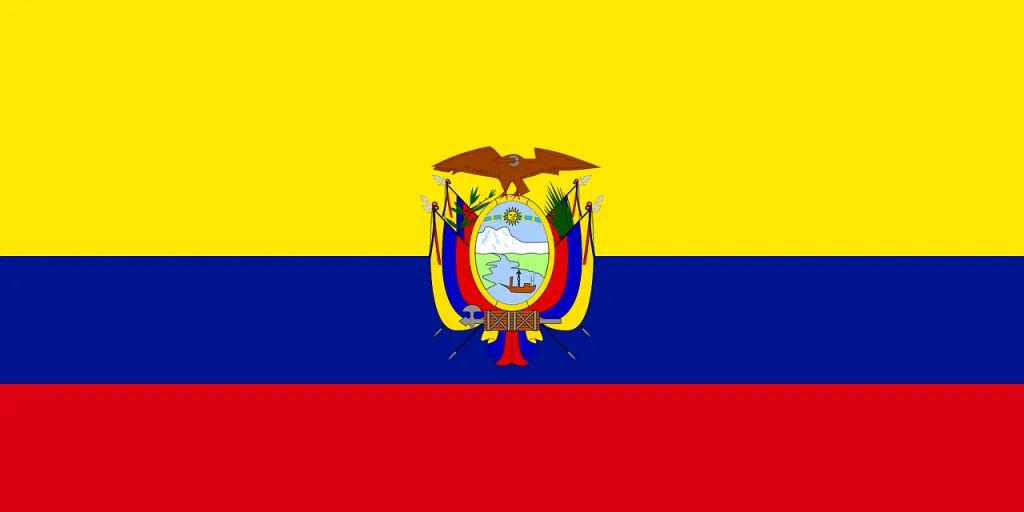31 Fun Facts About Ecuador | High Life in the Clouds
-
mbabura Volcano is a sacred site for indigenous rituals and ceremonies.
-
Over 92% of Ecuadorians are literate, among South America’s highest rates.
-
Otavalo Market is the largest open-air market in South America for textiles.
-
A 1949 radio broadcast of War of the Worlds caused a panic in Quito.
-
Over 300 banana varieties, including rare red bananas, are grown here.
-
Kichwa sheepskin paintings are famous for their vibrant, intricate designs.
-
Quilotoa Crater Lake formed 800 years ago after a massive volcanic eruption.
-
Fourteen recognized languages, including Spanish and indigenous dialects, are spoken.
-
Mindo’s cloud forests host over 500 bird species, including rare hummingbirds.
-
The San Rafael Waterfall, once South America’s tallest, collapsed in 2020.
-
Ecuadorian ceviche uses tomato sauce, unlike other Latin American versions.
-
The Devil’s Nose train ride offers breathtaking Andean cliff views.
-
Tigua art features colorful paintings depicting rural Andean life.
-
Baños is famous for its natural hot springs and swing at the world’s end.
-
The country hosts the world’s only equatorial glacier on Cayambe Volcano.
Table of Contents
1. It is the first country to give nature constitutional rights.
In 2008, Ecuador made history by becoming the first country in the world to recognize that nature has constitutional rights. This means that the environment is legally protected, and citizens can take legal action on behalf of nature if it’s being harmed.
This pioneering move was inspired by the indigenous concept of “Pachamama,” which views nature as a living entity that deserves respect and protection. It’s a reflection of Ecuador’s deep connection with its natural surroundings and its commitment to environmental conservation.
2. It was named after the equator.
Ecuador’s name comes from the Spanish word for equator, as the country straddles this imaginary line that divides the Earth into the Northern and Southern Hemispheres. The equator passes through the northern part of the country, and there’s even a monument called “Ciudad Mitad del Mundo” (Middle of the World City) that marks the spot.
However, modern GPS technology has shown that the actual equator is located a few meters away from the monument, at the Intiñan Solar Museum. Despite this, the monument remains a popular tourist attraction, where visitors can stand with one foot in each hemisphere.
3. It has five UNESCO World Heritage Sites.
Ecuador boasts five sites recognized by UNESCO as World Heritage Sites, highlighting its cultural and natural significance. These include the Galapagos Islands, the first site ever inscribed on the list, and the historic centers of Quito and Cuenca.
Additionally, the Qhapaq Ñan, an extensive Inca road system, and Sangay National Park, known for its biodiversity, are also honored. These sites attract tourists from around the world and underscore Ecuador’s commitment to preserving its heritage.
4. The Galápagos Islands are part of Ecuador.
READ ALSO: 22 Fun Facts About Paraguay | Where Guarani Echoes
The Galápagos Islands, known worldwide for their unique and diverse wildlife, are an integral part of Ecuador. This archipelago inspired Charles Darwin’s theory of natural selection and continues to be a living laboratory for scientific research.
Visitors to these islands can experience close encounters with species that are not found anywhere else on earth, making it a captivating highlight of Ecuador facts for wildlife enthusiasts and researchers alike.
5. Ecuador has abolished the death penalty.
Since 1897, Ecuador has prohibited the death penalty, making it one of the earliest countries to do so in Latin America. This stance reflects the nation’s respect for human rights and its progressive legal system.
Ecuador’s abolition of the death penalty aligns with its overall approach to justice, emphasizing rehabilitation over punishment. This policy has been a point of pride for many Ecuadorians and has influenced regional discussions on human rights.
6. It is known for its high-quality chocolate.
Ecuador has a long history of chocolate production, with evidence of cacao consumption dating back over 5,000 years. The country is home to the rare Arriba Nacional cacao beans, which are prized for their rich flavor and aroma.
Today, Ecuador is one of the world’s leading producers of fine cacao, with its chocolate often ranked among the best globally. This heritage makes Ecuador a must-visit for chocolate lovers looking to experience the origins of this beloved treat.
7. It gained independence from Spain in 1822.
Ecuador became independent from Spain on May 24, 1822, after centuries of colonial rule. The country was part of Gran Colombia, a federation that also included Venezuela, Colombia, and Panama, before becoming fully independent in 1830.
This period of history shaped Ecuador’s identity, blending indigenous, Spanish, and other cultural influences. The fight for independence, led by figures like Antonio José de Sucre, remains a source of national pride.
8. Ecuador uses the U.S. dollar as its official currency.

READ ALSO: 22 Fun Facts About New Jersey | Beyond the Turnpike
In a move to stabilize its economy, Ecuador adopted the U.S. dollar as its official currency in 2000. This transition has facilitated trade and tourism, making it easier for American tourists to travel and spend within the country.
This economic fact about Ecuador is crucial for travelers and economists alike, offering a glimpse into the country’s strategic decisions in global economics.
9. It has four distinct geographical regions.
Ecuador is divided into four main regions: La Sierra (the Andes highlands), La Costa (the coastal lowlands), La Amazonia (the Amazon rainforest), and La Región Insular (the Galapagos Islands). Each region offers unique landscapes and ecosystems.
From the snow-capped peaks of the Andes to the lush Amazon jungle and the volcanic Galapagos Islands, Ecuador’s geography is as diverse as it is breathtaking. This variety makes it a paradise for travelers seeking different experiences in one country.
10. Over 25 different languages are spoken in Ecuador.
While Spanish is the official language, Ecuador is linguistically diverse with over 25 recognized languages. This includes several indigenous languages such as Quechua, Shuar, and others, which are spoken by various ethnic groups throughout the country.
This linguistic variety enriches Ecuador’s cultural tapestry and provides fascinating insights into its social and cultural complexities for those interested in Ecuador facts.
11. It is the closest country to space.
Due to Earth’s equatorial bulge, Mount Chimborazo in Ecuador is the point on Earth’s surface closest to outer space. At 20,564 feet (6,268 meters), it is farther from the Earth’s center than Mount Everest.
This unique geographical feature makes Chimborazo a symbol of Ecuador’s natural wonders. Climbers and scientists alike are drawn to its summit for both its challenge and its scientific significance.
12. The traditional hat known as a “Panama hat” is actually from Ecuador.

READ ALSO: 25 Fun Facts About Chile | Get Ready for Discoveries
Contrary to popular belief, the iconic Panama hat originates from Ecuador. These hats were traditionally made from the plaited leaves of the toquilla straw plant, a technique perfected by Ecuadorian craftsmen.
This misnomer is a quirky yet historically significant fact, shedding light on Ecuador’s artisanal skills and their impact on global fashion trends.
13. The theory of evolution was inspired by the Galapagos Islands in Ecuador.
Charles Darwin’s groundbreaking theory of evolution was heavily influenced by his observations of the unique wildlife on Ecuador’s Galapagos Islands. The islands’ finches, with their varying beak shapes, played a key role in his research.
Today, the Galapagos remain a living laboratory of evolution, with species like giant tortoises and marine iguanas found nowhere else on Earth. The islands are a UNESCO World Heritage Site and a must-visit for nature enthusiasts.
14. It is part of the Antarctic Treaty.
Ecuador is one of the original signatories of the Antarctic Treaty, which was established in 1959 to promote peaceful scientific cooperation in Antarctica. The country maintains a research station on the continent.
This involvement highlights Ecuador’s commitment to global scientific collaboration and environmental protection. It also underscores the country’s role in international diplomacy and conservation efforts.
15. Spanish is the official language of Ecuador.
Spanish is the primary language spoken in Ecuador, reflecting its colonial history. However, many indigenous languages, such as Quechua and Shuar, are also spoken, especially in rural areas.
The linguistic diversity of Ecuador is a testament to its rich cultural heritage. Efforts to preserve indigenous languages are ongoing, ensuring that these traditions continue to thrive.
16. Ecuador’s Tungurahua volcano is one of the most active in the world.

READ ALSO: 29 Fun Facts About French You Need to Know
Tungurahua, aptly named “The Black Giant,” is one of the most active and closely monitored volcanoes in Ecuador. Its frequent eruptions have been a source of both awe and concern for the local populations.
Volcanic activity is a significant part of Ecuador’s natural landscape, shaping much of its topography and offering a dramatic glimpse into the earth’s geothermal power, which is central to many amazing facts about Ecuador.
17. The US dollar is the official currency of Ecuador.
Since 2000, Ecuador has used the US dollar as its official currency, replacing the Ecuadorian sucre. This move was made to stabilize the economy and combat inflation.
The use of the dollar has simplified transactions for tourists and strengthened trade with the United States. It also reflects Ecuador’s efforts to integrate into the global economy.
18. Guinea pig, or “cuy,” is a traditional delicacy in Ecuador.
In Ecuador, guinea pig, known locally as “cuy,” is a popular dish often served at celebrations and special occasions. It is typically roasted or grilled and enjoyed with sides like potatoes or rice.
While it may seem unusual to some, cuy is deeply rooted in Andean culture and has been consumed for centuries. Its preparation varies by region, with some areas even serving it fried or in stews.
19. The Panama hat actually originates from Ecuador.
Despite their name, Panama hats are made in Ecuador from the fibers of the toquilla palm. They became known as Panama hats after being shipped through Panama during the California Gold Rush.
These hats are a symbol of Ecuadorian craftsmanship and are recognized as a UNESCO Intangible Cultural Heritage. Today, they are still handcrafted by skilled artisans in towns like Montecristi.
20. The Yasuni National Park in Ecuador is one of the most biodiverse places on earth.

READ ALSO: 25 Fun Facts About Georgia | Small State, Big Surprises
Yasuni National Park is a hotspot of biodiversity, home to countless species of flora and fauna, many of which are endemic. Its vast rainforests are critical for ecological research and conservation efforts.
This park is not only a natural treasure but also a vital resource for scientists and conservationists aiming to understand and protect the Earth’s biodiversity.
21. It is home to thousands of orchid species.
Ecuador is often called the “Orchid Capital of the World” due to its incredible diversity of orchid species—more than 4,000 have been identified within its borders. These flowers thrive in the country’s varied climates.
Orchids play a significant role in Ecuador’s economy, with many exported for their beauty and fragrance. The country’s cloud forests, like those in Mindo, are particularly famous for their orchid populations.
22. The Mangroves of Ecuador are home to flamingos.
Ecuador’s coastal mangroves, particularly in areas like the Machalilla National Park, are habitats for flamingos. These birds are drawn to the shallow waters where they can feed on small organisms.
Flamingos add a splash of color to Ecuador’s coastal landscapes and are a popular sight for birdwatchers. Their presence highlights the importance of mangroves as ecosystems.
23. The capybara, the world’s largest rodent, lives in Ecuador.
The capybara, a large semi-aquatic rodent, is native to Ecuador and can be found in its wetlands and rivers. These gentle creatures often live in groups and are known for their calm demeanor.
Capybaras are an important part of Ecuador’s ecosystem, serving as prey for predators like jaguars. They are also a source of food and leather for local communities.
24. The traditional dish of Ecuador is ceviche, made with locally sourced seafood.

READ ALSO: 24 Fun Facts About Arizona | The Secret’s Out
Ecuador’s version of ceviche, a popular seafood dish, is renowned for its unique preparation using fresh local ingredients, including shrimp, lime, and plantain. It reflects the rich culinary traditions and coastal influences of the country.
This dish is a staple in Ecuadorian cuisine and offers a taste of the local flavor, making it a delightful point of interest for food enthusiasts exploring Ecuador.
25. Guayaquil is the largest city in Ecuador.
Guayaquil, the bustling port city, serves as the economic and commercial heart of Ecuador. It is the largest city in terms of population and area, and plays a critical role in the nation’s economy due to its strategic coastal location.
This city’s dynamic culture and economy make it a focal point for understanding urban development in Ecuador, offering insights into its modernization and challenges.
26. It has a “moving forest” where trees walk.
In Ecuador’s Sumaco Biosphere Reserve, there are trees known as “walking palms” that can shift their position over time. They do this by growing new roots in the direction they want to move.
This adaptation helps them seek better sunlight or escape flooding. The phenomenon adds to the mystique of Ecuador’s rainforests, making them a fascinating subject for researchers.
27. The city of Latacunga is split by the equator.
The city of Latacunga in Ecuador is unique because it is divided by the equator. This means that part of the city lies in the Northern Hemisphere and part in the Southern Hemisphere.
Visitors can experience this phenomenon at the Intiñan Solar Museum, where they can stand on the exact line of the equator. It’s a popular spot for tourists to take photos and learn about geography.
28. The Galapagos Islands have penguins, which is unusual for the tropics.
The Galapagos Islands are home to the Galapagos penguin, one of the few penguin species found in tropical regions. These penguins have adapted to the cooler waters around the islands.
Despite living near the equator, Galapagos penguins thrive due to the cold currents brought by the Humboldt Current. They are a symbol of the islands’ unique biodiversity.
29. The Pink Dolphin lives in Ecuador’s Amazon region.
Ecuador’s Amazon basin is home to the Amazon River dolphin, also known as the pink dolphin. These dolphins are known for their distinctive pink color and playful behavior.
They are considered sacred by some indigenous communities and are protected under Ecuadorian law. Pink dolphins are a highlight for tourists exploring the Amazon.
30. The Oyacachi Reserve in Ecuador has the world’s largest butterfly.
The Oyacachi Reserve in Ecuador is home to the world’s largest butterfly, the Queen Alexandra’s birdwing. This butterfly has a wingspan of up to 11 inches (28 cm) and is found only in this region.
The reserve is a protected area dedicated to preserving this species and its habitat. Visitors can learn about butterfly conservation and see these giants up close.
31. Ecuador’s first female President served only two days.
Rosalía Arteaga briefly served as Ecuador’s first female President in 1997, but her term lasted only two days. She was installed as Vice President and assumed the presidency during a political crisis.
Despite her short tenure, Arteaga remains a significant figure in Ecuadorian politics. Her presidency marked a milestone for women’s representation in leadership roles.
FAQs
Ecuador is known for its stunning biodiversity, including the Galapagos Islands and Amazon rainforest. It’s famous for high-quality chocolate and Panama hats, which originate there. The equator runs through the country, marked by unique geographical sites.
The Ecuadorian flag’s yellow represents the country’s wealth and sunshine, blue symbolizes the ocean and sky, and red stands for the blood of heroes. Its design reflects Ecuador’s natural beauty, independence, and historical struggles.
Panama hats, made from toquilla palm in Ecuador, gained fame during the 19th-century California Gold Rush via Panama’s trade routes. Ecuadorian artisans in towns like Montecristi craft these hats, recognized as UNESCO Intangible Cultural Heritage.
The capital of Ecuador is Quito, which is located in the Andes Mountains in the northern part of the country. Quito is known for its well-preserved colonial center and its position as one of the highest capital cities in the world.
Ecuador’s nickname is “The Land of Four Worlds” due to its diverse regions: Andes, Amazon, Coast, and Galapagos. This reflects its unique geographical and cultural variety.





